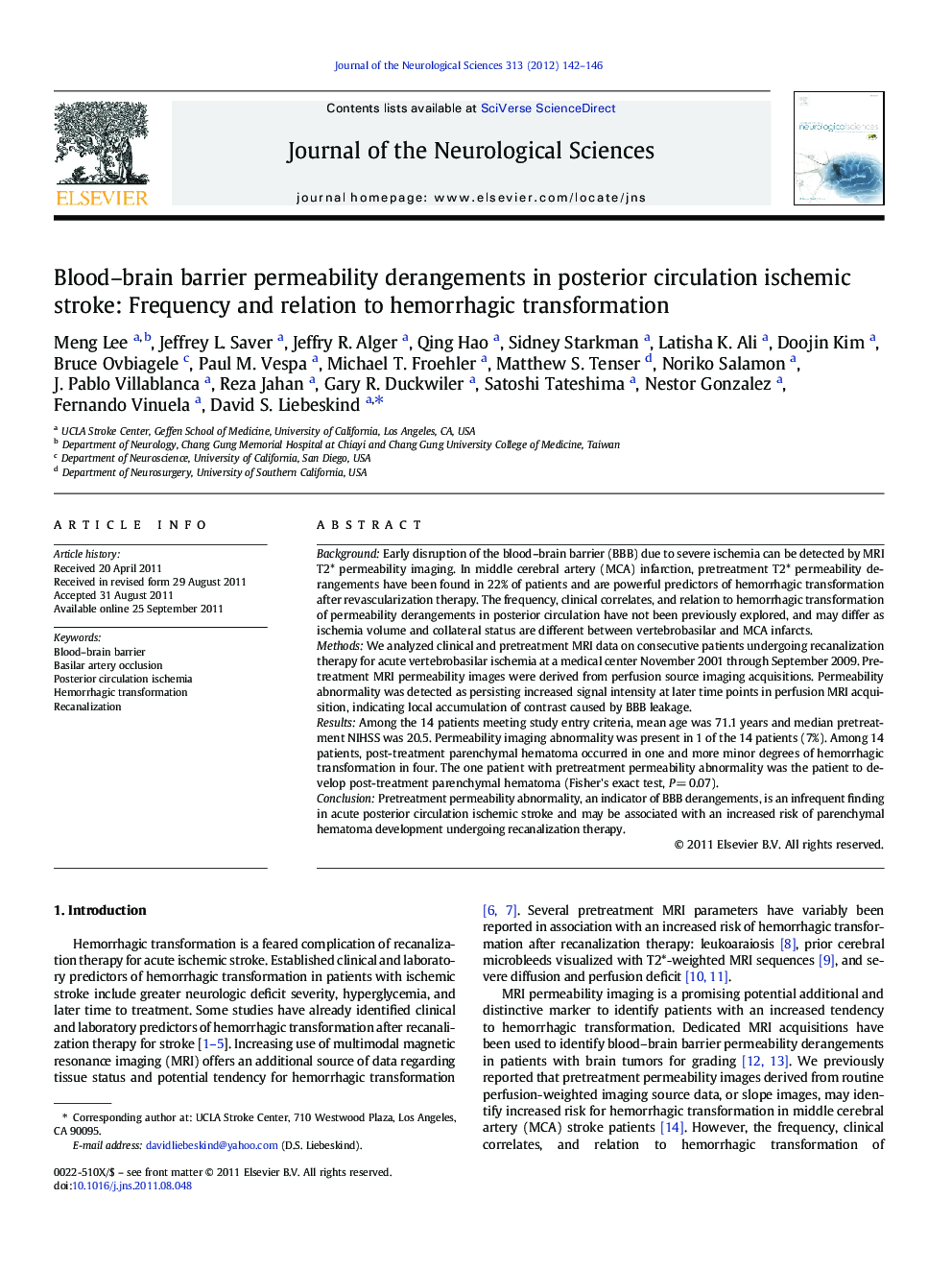| کد مقاله | کد نشریه | سال انتشار | مقاله انگلیسی | نسخه تمام متن |
|---|---|---|---|---|
| 1914107 | 1535149 | 2012 | 5 صفحه PDF | دانلود رایگان |

BackgroundEarly disruption of the blood–brain barrier (BBB) due to severe ischemia can be detected by MRI T2* permeability imaging. In middle cerebral artery (MCA) infarction, pretreatment T2* permeability derangements have been found in 22% of patients and are powerful predictors of hemorrhagic transformation after revascularization therapy. The frequency, clinical correlates, and relation to hemorrhagic transformation of permeability derangements in posterior circulation have not been previously explored, and may differ as ischemia volume and collateral status are different between vertebrobasilar and MCA infarcts.MethodsWe analyzed clinical and pretreatment MRI data on consecutive patients undergoing recanalization therapy for acute vertebrobasilar ischemia at a medical center November 2001 through September 2009. Pretreatment MRI permeability images were derived from perfusion source imaging acquisitions. Permeability abnormality was detected as persisting increased signal intensity at later time points in perfusion MRI acquisition, indicating local accumulation of contrast caused by BBB leakage.ResultsAmong the 14 patients meeting study entry criteria, mean age was 71.1 years and median pretreatment NIHSS was 20.5. Permeability imaging abnormality was present in 1 of the 14 patients (7%). Among 14 patients, post-treatment parenchymal hematoma occurred in one and more minor degrees of hemorrhagic transformation in four. The one patient with pretreatment permeability abnormality was the patient to develop post-treatment parenchymal hematoma (Fisher's exact test, P = 0.07).ConclusionPretreatment permeability abnormality, an indicator of BBB derangements, is an infrequent finding in acute posterior circulation ischemic stroke and may be associated with an increased risk of parenchymal hematoma development undergoing recanalization therapy.
Journal: Journal of the Neurological Sciences - Volume 313, Issues 1–2, 15 February 2012, Pages 142–146